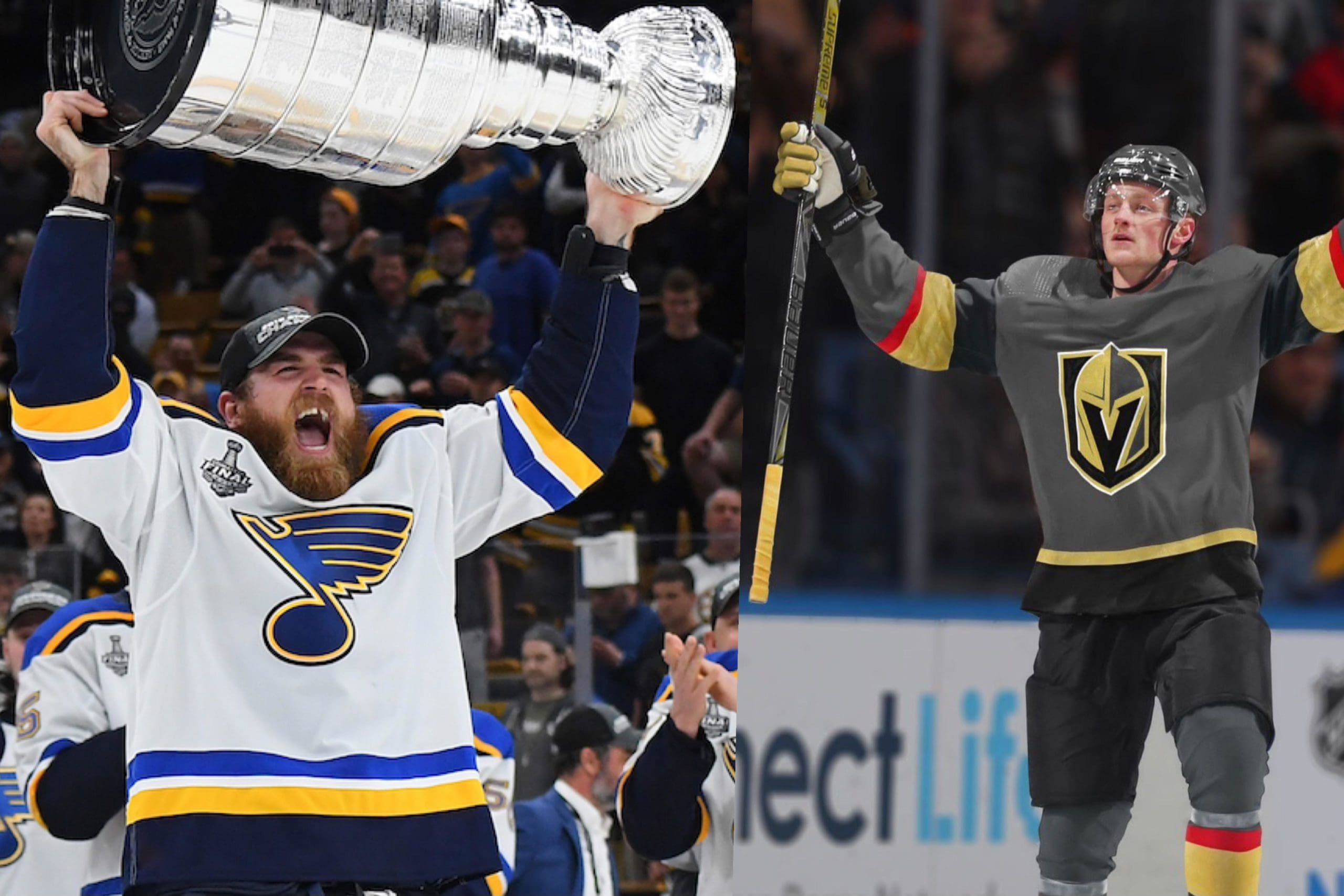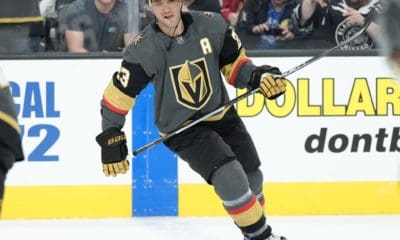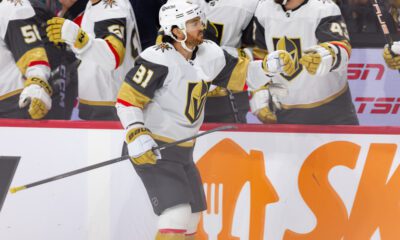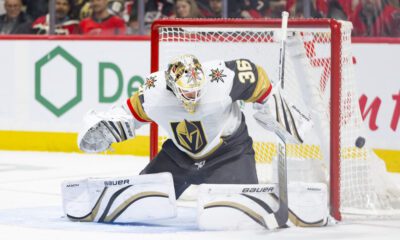Golden Knights Features
Comparing the Jack Eichel Trade to Other Top-Line Center NHL Trades

It has been almost three weeks now since the Jack Eichel trade finally commenced. The Golden Knights acquired superstar center Eichel in a blockbuster six-asset deal. Alex Tuch, Peyton Krebs, and two draft picks were sent to the Sabres whereas Eichel, and a pick headed to Las Vegas.
Eichel finally had his artificial disk replacement surgery on November 12 and is expected to miss the next couple of months in recovery time.
It is far too early to tell who won this trade. But it is clear that the Vegas Golden Knights got the best player in the deal. Eichel will be the Golden Knight’s first true number one center. This has been an area in which they severely lacked in their five years of existence.
As much as William Karlsson, Chandler Stephenson, and even as far back as Cody Eakin and Erik Haula were good centers, they fail in comparison to Eichel.
Most team’s top-liner centers are brought up through the draft and developed into top-line players. Free Agency is also a commonplace where top centers are brought into teams.
But there have been a handful of NHL trades in the past where a first-liner center has been dealt. The Dallas Stars (Tyler Seguin), St. Louis Blues (Ryan O’Reilly), and New York Rangers (Mika Zibanejad) are just some examples.
Today we will discuss some of the biggest blockbuster NHL trades over the salary cap era and how they have/have not paid off for the teams that went all-in on the NHL trade market.
Hockey Trades
The Jack Eichel deal was not a hockey trade. And for those of you that are confused by that terminology, a ‘hockey trade’ is lingo used to describe even player-for-player moves. They are rare, but usually between two teams looking to mix up their players and give players a change of scenery.
Think Cody Glass for Nolan Patrick.
Eichel’s deal was more of a sale to gain assets by the Sabres, and the Golden Knights paying general manager Kevyn Adams price. It was not a hockey trade.
But even though the Eichel deal was not one, there have been a good amount of first-line center trades that fall into the hockey trade category.
On January 6, 2016, Ryan Johansen was traded to the Nashville Predators one-for-one in exchange for Seth Jones. Jones has since moved on from Columbus but Johansen is still in Nashville and locked up until 2024-25.
The Predators have more of a 1A/1B situation with their top centers of Johansen and Matt Duchene. But Johansen has 284 points in 417 games in Nashville. He was a key player to the team in 2017 where they made it to the Stanley Cup Finals.
In a trade that many Rangers fans will look back on and smile, the Ottawa Senators traded Mika Zibanejad and a 2018 second-round pick (Jonathan Berggren) to the Rangers in exchange for Derrick Brassard and a 2018 seventh-round pick (Luke Loheit). This has turned out to be one of the most lopsided trades in recent memory.
Zibanejad has two 70-plus point seasons from 2018-2020 and surpassed 40 goals two seasons ago. He is currently on pace for 68 points this season and the Rangers locked Zibanejad up to an eight-year extension in October of 2021.
Full-Trade Packages
But as mentioned before, the Golden Knights acquisition of Eichel was not an even-player swap or ‘hockey trade’. Instead, it was a massive blockbuster that included picks and prospects, conditions, and salary cap maneuvering.
Luckily for us, the Sabres happen to have made a very similar trade to this in the summer of 2018. On July 1, 2018, the Sabres traded Ryan O’Reilly to the St. Louis Blues in exchange for Patrick Berglund, Vladimir Sobotka, Tage Thompson, a 2019 1st rounder (Ryan Johnson), and a 2021 2nd rounder (Ben Roger).
O’Reilly not only went on to win a Stanley Cup with the St. Louis Blues the year after, but he was also the Conn Smythe Trophy winner. This trade is eerily similar to the Eichel trade not only because it contains the Sabres, but of because of the similar pieces in the framework of the trade.
Tage Thompson is the only notable name left from that trade that is still within the Sabres organization. Berglund retired after 23 games with the Sabres and Sobotka left in free agency to play overseas. Ryan Johnson and Ben Roger have yet to make the NHL.
Compared to the Eichel Trade
Alex Tuch is far better of a player than both Sobotka and Berglund as was the big roster piece going the way of the Sabres in the Eichel deal. He will be missed in Las Vegas, however, he has struggled with injuries and may continue this negative trend in Buffalo.
Peyton Krebs is essentially the new Tage Thompson, although with a little bit of higher expectations. He is currently playing for the Rochester Americans of the AHL and we will have to keep an eye on his development. As for the draft picks, it will be up to the Sabres scouting and draft management to
The Golden Knights despite trading away the likes of Krebs, Nick Suzuki, Cody Glass, Erik Brannstrom, and others still have a solid prospect pool of young players. Just look at what the trio of 22-year olds in Jonas Rondbjerg, Paul Cotter, and Jake Leschyshyn are doing in the NHL right now.
On top of this, the Golden Knight’s core is young as a whole. Eichel is 25, Shea Theodore is 26, and Mark Stone is not even 30. While the team has veteran guys like Alex Pietrangelo and Robin Lehner, they are not anywhere close to retirement.
The Golden Knight’s core is built to go deep in the playoff with Jack Eichel now in the mix. They just have to get healthy first. If the Sabres get thirty-goal seasons out of Tuch and Krebs then good for them. The Golden Knights will be happy contending for a Stanley Cup.













